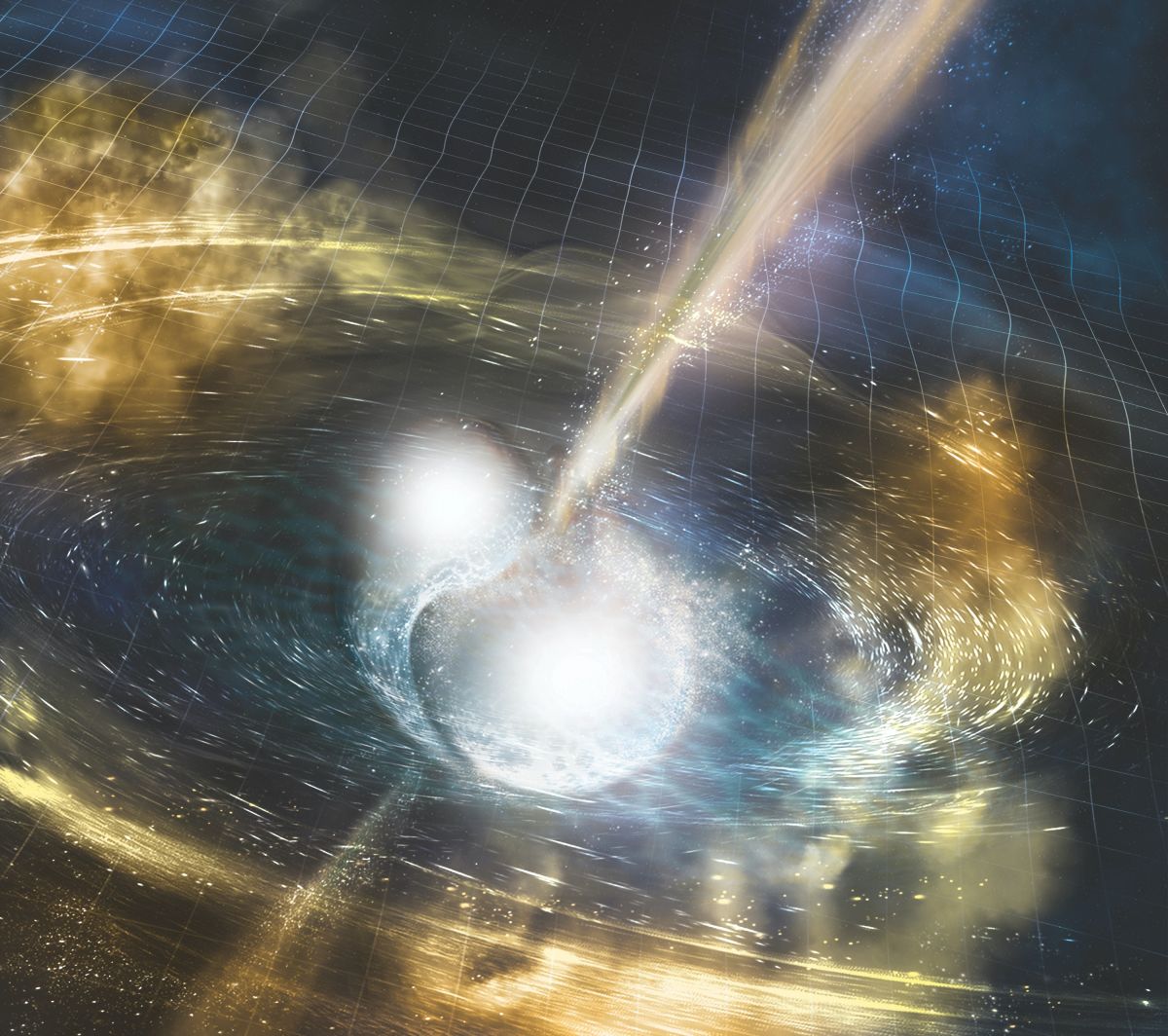Northrop Grumman’s Cygnus resupply ship, with its prominent cymbal-shaped UltraFlex solar arrays is pictured attached to the space station.
Read MoreMonth: April 2021
A tiny crystal device could boost gravitational wave detectors to reveal the birth cries of black holes
This article was originally published at The Conversation. The publication contributed the article to Space.com’s Expert Voices: Op-Ed & Insights. David Blair, Emeritus Professor, ARC Centre of Excellence for Gravitational Wave Discovery, OzGrav, University of Western Australia In 2017, astronomers witnessed the birth of a black hole for the first time. Gravitational wave detectors picked up the ripples in spacetime caused by two neutron stars colliding to form the black hole, and other telescopes then observed the resulting explosion. But the real nitty-gritty of how the black hole formed, the movements of matter in the…
Read MoreSix ways satellites make the world a better place
This article was originally published at The Conversation. The publication contributed the article to Space.com’s Expert Voices: Op-Ed & Insights. Ciara McGrath, Research Fellow, Electronic And Electrical Engineering, University of Strathclyde Almost 3,000 operational spacecraft orbit our Earth. This number is growing constantly, thanks to cheaper materials and smaller satellites. Having this many satellites in orbit can create problems, including space junk and the way they change our view of the night sky. But satellites provide a vital service. Many people are familiar with GPS, which helps us navigate. Some may know satellites provide crucial data for our weather…
Read MoreIf everyone on Earth sat in the ocean at once, how much would sea level rise?
If everyone on Earth sat down in the ocean, how far would the water rise? – Zahkaev and Viktorere This article was originally published at The Conversation. The publication contributed the article to Space.com’s Expert Voices: Op-Ed & Insights. Tony E. Wong, Assistant Professor of Mathematical Sciences, Rochester Institute of Technology Curious Kids is a series for children of all ages. If you have a question you’d like an expert to answer, send it to CuriousKidsUS@theconversation.com. (Image credit: The Conversation) Hypothetical questions, like what would happen if everyone on Earth went for an ocean swim…
Read MoreNASA’s Mars helicopter Ingenuity touches down on the Red Planet
The first helicopter on Mars is officially on Martian soil. NASA’s Mars helicopter Ingenuity touched down on the surface of the Red Planet after being dropped by its mother ship, the Perseverance rover, the space agency announced late Saturday (April 4). The helicopter’s first flight is just over a week away. “#MarsHelicopter touchdown confirmed! Its 293 million mile (471 million km) journey aboard @NASAPersevere ended with the final drop of 4 inches (10 cm) from the rover’s belly to the surface of Mars today,” officials with NASA’s Jet Propulsion Laboratory…
Read MoreFallen debris from SpaceX rocket launch lands on a farm in central Washington
This pressure vessel, which came from the second stage of a Falcon 9 rocket, fell onto a farm in central Washington, local authorities reported April 2, 2021. (Image credit: Grant County Sheriff/Twitter) A piece of debris from a SpaceX launch has turned up on someone’s farm in central Washington, local authorities reported Friday (April 2) — about one week after the falling rocket debris sparked reports of “shooting stars” the U.S. Pacific Northwest. According to the Grant County Sheriff’s Office, the recovered object appears to be a composite overwrapped pressure…
Read MoreThe dingo fence from space: Satellite images show how these top predators alter the desert
This article was originally published at The Conversation. The publication contributed the article to Space.com’s Expert Voices: Op-Ed & Insights. Adrian G. Fisher, Lecturer in Remote Sensing, UNSW Charlotte Mills, Visiting Fellow, UNSW Mike Letnic, Professor, Evolution and Ecology Research Centre, UNSW Mitchell Lyons, Postdoctoral research fellow, UNSW Will Cornwell, Associate Professor in Ecology and Evolution, UNSW As one of the longest structures in the world, the dingo fence is an icon of Australia. It stretches more than 5,600 kilometres across three states, including 150 kilometres that traverses the red sand dunes of…
Read MoreSolar geoengineering is worth studying but not a substitute for cutting emissions, study finds
This article was originally published at The Conversation. The publication contributed the article to Space.com’s Expert Voices: Op-Ed & Insights. James W. Hurrell, Professor and Scott Presidential Chair in Environmental Science and Engineering, Colorado State University Ambuj D Sagar, Founding Head, School of Public Policy, and Vipula and Mahesh Chaturevdi Professor of Policy Studies, The Indian Institute of Technology Delhi Marion Hourdequin, Professor of Philosophy, Colorado College A new report from the National Academies of Sciences, Engineering and Medicine tackles a controversial question: Is solar geoengineering – an approach designed to cool the Earth…
Read MoreNASA to Host Virtual Viewing of Orion Spacecraft Drop Test
Engineers will drop a 14,000-pound test version of the Orion spacecraft into the Hydro Impact Basin at NASA’s Langley Research Center’s Landing and Impact Research Facility in Hampton, Virginia at 1:45 p.m. EDT Tuesday, April 6.
Read MoreDiscovery of two new giant radio galaxies offers fresh insights into the universe
The two giant radio galaxies found with the MeerKAT telescope. In the background is the sky as seen in optical light. Overlaid in red is the radio light from the enormous radio galaxies, as seen by MeerKAT. (Image credit: Oxford/Rhodes/SARAO) This article was originally published at The Conversation. The publication contributed the article to Space.com’s Expert Voices: Op-Ed & Insights. Jacinta Delhaize, SARAO Postdoctoral Research Fellow, University of Cape Town Two giant radio galaxies have been discovered with South Africa’s powerful MeerKAT telescope, located in the Karoo region, a semi-arid area in the south…
Read More